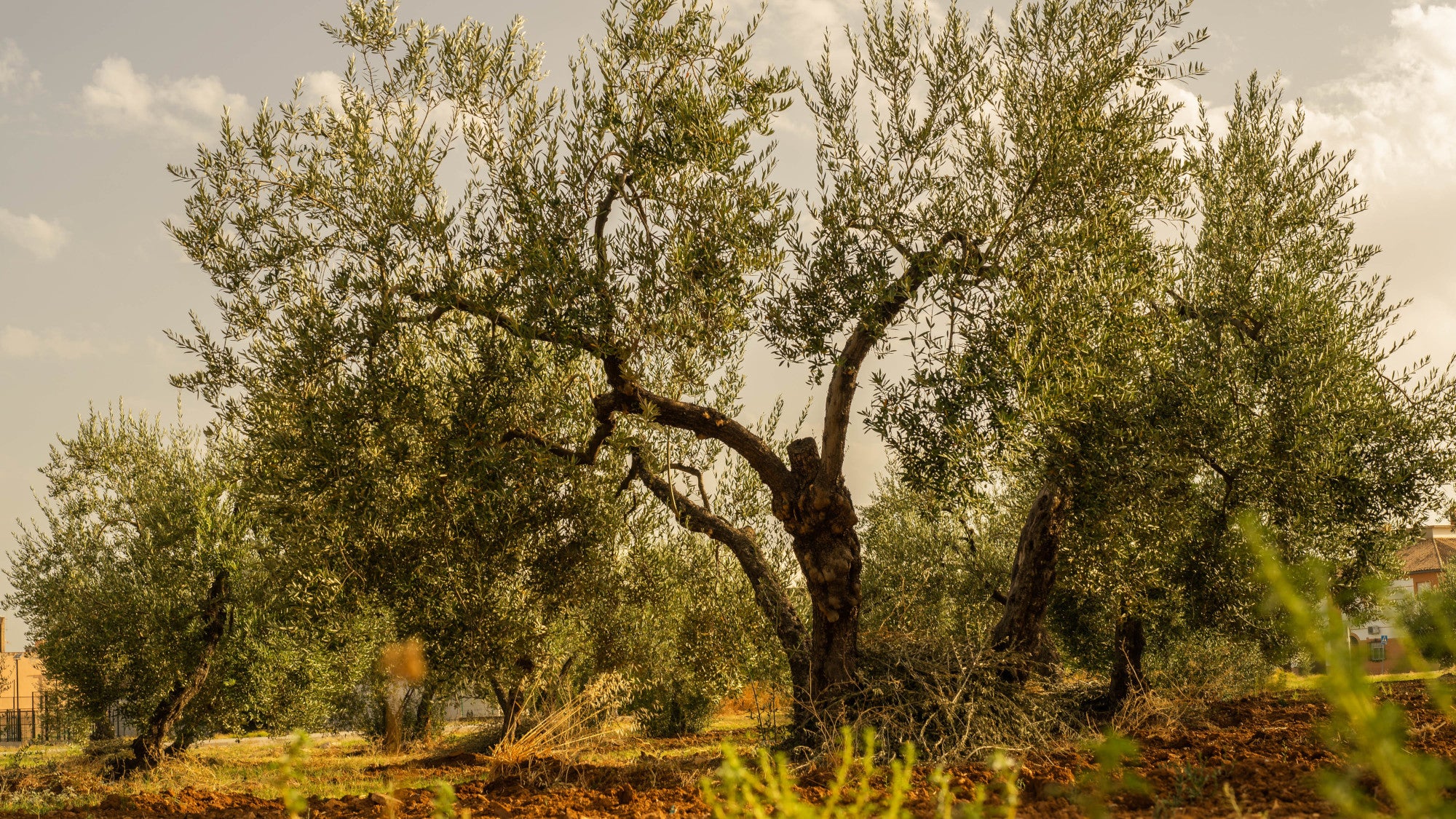
A healthy fat obtained from squeezing olives, olive oil is a staple of both modern and ancient cuisine. With the earliest traces of olive oil dating back over 8000 years, olive oil has roots almost as old as human history itself. Over the millennia, preferred production techniques have emerged that retain the organoleptic and phenolyic properties of the olives, resulting in a healthy, delicious olive oils. Our exclusively curated olive oil uses the most refined production methods to deliver a visceral and transformative culinary experience.
How Olive Oil is Made
Producing olive oil is simple, but producing the finest olive oil available is a different task entirely. Production of olive oil always starts with the trees; older olive trees produce more balanced, less acidic olives, and are preferable to newer groves. At Taycte, we do not offer any olive oil from trees less than a century old - we don't think the trees are ready yet.
Picking the Olives
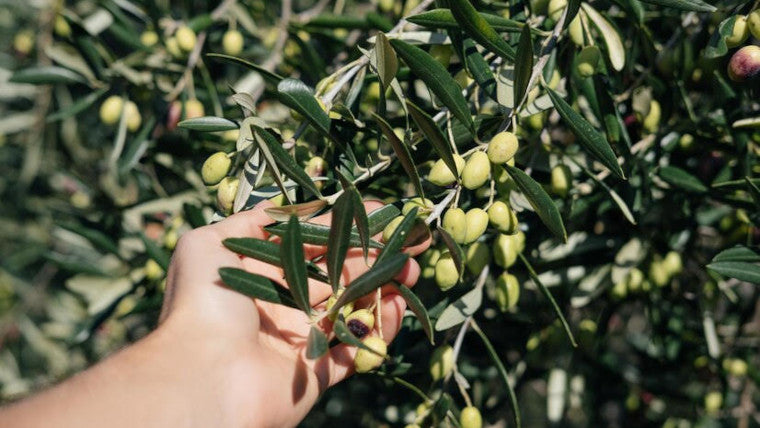
The next step is picking the olives. For large commercial operations, this commonly means placing a tarp around the olive tree, then mechanically shaking the tree and collecting the debris on the tarp; for smaller, more bespoke operations, the tarp is either elevated to prevent the olive fruit from bruising, or plucked by hand from the tree at the height of ripeness.
Preparing the Olives for Processing

After picking the olives, they must immediately be processed in order to preserve the qualities of the olives. First, the collected olives must be defoliated to remove any stems or leaves that made it through the collection process. Once defoliated, the olives should be stored in a cool, dry place until they can be washed and crushed - a process that should happen the same day as the harvest.
Making Olives into Olive Oil

At this stage in the process, the fresh olives that have been harvested are ready to be processed into olive oil. While the process is broadly similar for every olive oil, the manner in which the olives are processed can create large differences in quality, which we'll discuss below.
Crushing the Olives
The first step of processing for olive oil is crushing the olives into a paste. The paste created by crushing helps to break down the olive fruit and release the oil within.
Recovering the Olive Oil
At this point in the process, the oil needs to be extracted from the paste created in the prior step; there are two methods by which this can happen: pressing and extracting. In both cases, pressing or extracting, the process should take place at a low temperature -- higher temperatures increase the rate of oxidation and break down nutrients such as polyphenols.
Olive Oil via Cold-Press
The traditional way of recovering olive oil, cold press olive oil is created by laying the paste generated in the previous step on mats, then pressing the mats without the addition of heat. The paste, squeezed by the hydraulic presses, releases the oil; this method has been used for thousands of years.
Cold-Extraction Olive Oil
Cold-extraction olive oil is another manner by which olive oil can be recovered. A relatively new method comparatively, cold-extraction uses a centrifuge to spin the paste, allowing the oil to separate naturally from the paste itself. To qualify as cold-extraction, the temperature of the centrifuge may never exceed 27 degrees Celsius. Many producers have since switched to this method as it produces higher yields without compromising the quality of the oil. Both cold-press and cold-extraction are high-quality extraction methods which are capable of producing great olive oils.
Verifying the Results
At this point, olive oil has been created, but what type? Not all olive oils are created equal, and there are several different grades of olive oils that are available for consumption. While you'll only find extra virgin olive oils (EVOOs) on our site, there are a variety of marketing gimmicks employed to sell lower quality oils at premium prices.
Why Extra Virgin Olive Oil
Before we can answer, 'why extra virgin olive oil?' we first need to understand the differences between the different qualities of olive oil. Once the differences are understood, it will rapidly become evident why we prefer extra virgin olive oils. Broadly speaking, olive oils fall into four different categories (in order of ascending quality):
- Olive Pomace Oil
- Refined Olive Oil
- Virgin Olive Oil
- Extra Virgin Olive Oil
While you'll only find extra virgin olive oils here, it's important to establish a standard for the different quality tiers; they are defined differently everywhere, so for the purpose of this article, we'll be using the standards developed by the International Olive Council to differentiate between the different qualities of oils.
Olive Pomace Oils
Olive pomace oil is a type of olive oil that is made from the residual paste and pits that remain after the first extraction of the olive oil. This residual material, which is also known as pomace, contains small amounts of oil that can be extracted using solvents such as hexane. The resulting oil is then refined to remove any impurities, and blended with a small amount of virgin olive oil for flavor.
While olive pomace oil is a more economical option than extra virgin olive oil, which is made from the first cold-pressing of the olives and has a higher price point, it is not as high in quality or flavor as extra virgin olive oil, and is not recommended for use in salad dressings or other raw applications.
The IOC recognizes three different types of olive pomace oils:
- Crude Olive Pomace Oil: Intended for refining for use for human consumption, or technical consumption.
- Refined Olive Pomace Oil: Refined crude olive pomace oil which has a free acidity, expressed as oleic acid, of not more than 0.3 grams per 100 grams and its other characteristics correspond to those fixed for this category in the IOC standard. Products carrying this designation may only be sold direct to the consumer if permitted in the country of retail sale
- Olive Pomace Oil: A blend of refined olive pomace oil and virgin olive oils which has a free acidity of not more than 1 gram per 100 grams and its other characteristics correspond to those fixed for this category in the IOC standard. The country of retail sale may require a more specific designation, but it is fit for consumption.
As we mentioned above, these oils are made from the use of solvents and re-estrification processes, which, in our opinion, makes them categorically unfit for human consumption (despite possibly being legal in your locale). If possible, we recommend staying as far away from these oils, and not getting caught in the selling points like, 'higher smoke point.' Historically, these products have contained high levels of cancer-causing chemicals and have been removed from sale in proactive countries.
Refined Olive Oils
According to olive oil enthusiast Tom Mueller in his hit book 'Extra Virginity', olive oil is one of the only vegetable oils that doesn't need to be refined. Knowing that olive oil doesn't necessarily need to be refined begs the question, "Why does some olive oil need to be refined?" The answer is simple: if the oil weren't refined, it wouldn't be saleable for consumption; this unrefined oil is known as lampante oil. The process of refining lampante oil into refined olive oil can contain a handful of different processes:
- Degumming: Degumming olive oil is a process by which phosphatides, or gums, are removed from an oil by mixing the oil with a small quantity of acid to precipitate the phosphatides out. A centrifuge is then used to separate the oil from the resulting liquid and precipitate.
- Neutralization: The process by which oils are treated with caustic soda, neutralizing the fatty acids within the oil and removing the acidity.
- Bleaching: The oil is heated to around 100° C and slurried with acid-activated bleaching earth. This process results in adsorption of color bodies and oxidation processes, removing some color from the oil.
- Winterization: A process by which wax is removed, allowing for the resulting oil to be clear at room temperature.
- Deodorization:The removal of the odors and light contaminants by heating the oil to extremely hot temperatures (200-260° C) at low pressures. This also reduces the color of the oil because of the breakdown of carotenes at high temperatures.
During the refining process, "many biologically important compounds such as polar phenols, tocopherols, squalene, and carotenoids are lost significantly in the various refining steps (neutralization, bleaching, deodorization)." In addition to stripping the olive oil of its health benefits, the refining process removes any odors, aromas, and impurities left in the oil. Refined olive oil isn't a catchy name, so marketers have come up with other ways to term it; if you see lite olive oil or pure olive oil, these are alternative terms for refined olive oil. As you can probably guess, oil that has to be refined to be suitable for human consumption isn't something we can endorse - stay away from refined olive oils wherever possible.
Virgin Olive Oils
The IOC defines virgin olive oils as, "oils which are obtained from the fruit of the olive tree (Olea europaea L.) solely by mechanical or other physical means under conditions, particularly thermal conditions, that do not lead to alterations in the oil, and which have not undergone any treatment other than washing, decantation, centrifugation and filtration." Virgin olive oils have two different grades, virgin olive oil, and extra virgin olive oil. To be a virgin olive oil, you've got to have a free acidity, expressed as oleic acid, of not more than 2 grams per 100 grams. The higher acidity is a measure of lower quality; extra virgin olive oil may have no more than 0.8% free acidity and has been show to have more polyphenols, a healthy monosaturated fat. While virgin olive oils aren't bad, the higher acidity is often a symptom of higher heat levels during extraction or lower quality fruit going into the extraction; in either case, we can't recommend virgin olive oils when extra virgin olive oils are so ubiquitous.
Extra Virgin Olive Oils (EVOOs)
The highest grade of olive oil recognized by the IOC, extra virgin olive oil(EVOO) can only have a free acidity of 0.8 grams per 100 grams. This definition isn't set in stone, though, it changes from locale to locale -- in the United States, the United States Department of Agriculture (USDA) determines what qualifies as EVOO; in the European Union, the EU Commission; in Australia, the Australian Olive Association; and so on, so forth. Complicating matters, a lot of olive oil that's labeled 'extra virgin' isn't extra virgin at all - there's a ton of fraud that takes place every day in grocery stores across the world, likely because EVOOs are the lowest yielding, most expensive of the different olive oil varieties.
The D.O.P. Canino Difference
As we've covered in other places on the site, D.O.P is a designation of quality that ensures that all stages of cultivation and production take place within a geographical region according to norms. The rolling territory that hosts the picturesque hills of Monti di Canino is located in the Viterbo Maremma, Italy, a few kilometers from Tuscany and a short distance from the sea. Olive oil production was imported thousands of years ago by the Greeks, and later refined by the Etruscans, who widely disseminated the knowledge of oil and the techniques by which it could be extracted. This knowledge, enshrined in the paintings and frescoes on vases and furnishings, give important insight into the history of this ancient oil.
The region over time became synonymous with quality oils. The roots of the olive trees run deep into the local soil and tradition, with the two inextricably linked over the last thousands of years. The groves here, ancient by any standard, have trees that are millennia old; only trees at least a century old are used for the production of D.O.P Canino.
The difference is obvious at first pour: D.O.P Canino is a bright green color with a hint of gold, not the amber color that is standard in grocery stores. Upon tasting, the spice of the fruit dances lightly upon the palate, dissipating quickly making the presence of the polyphenols known. The acidity, naturally low from the ancient groves, never exceeds 0.7 grams of free oleic acid per 100 grams -- above and beyond the standards of even EVOO. This oil, the Etruscan way, refined by generations, is the pinnacle of olive oil; it is truly olive oil at its finest.

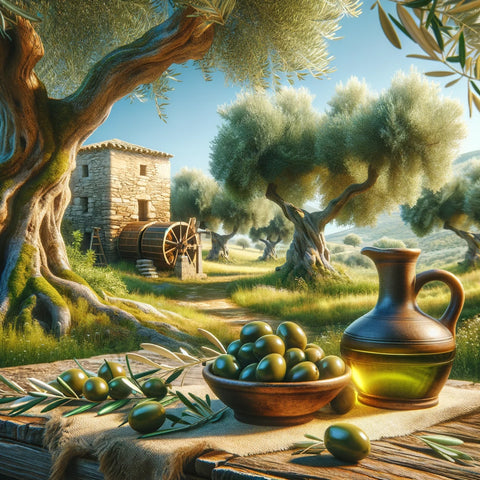
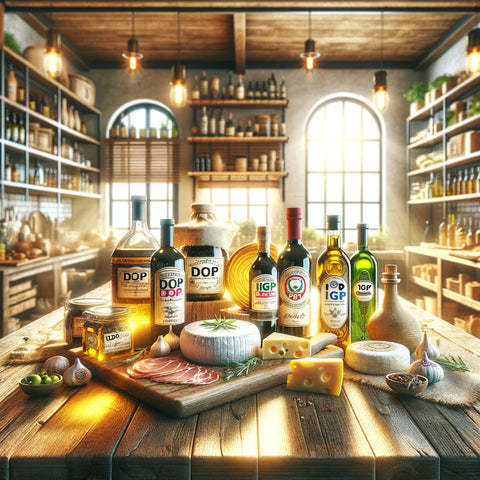
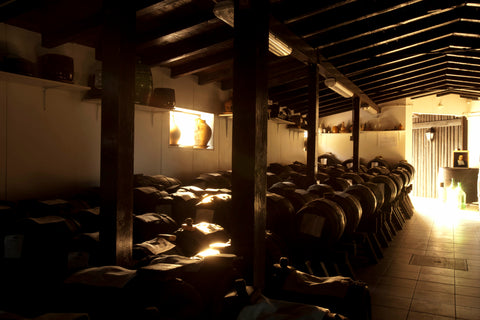

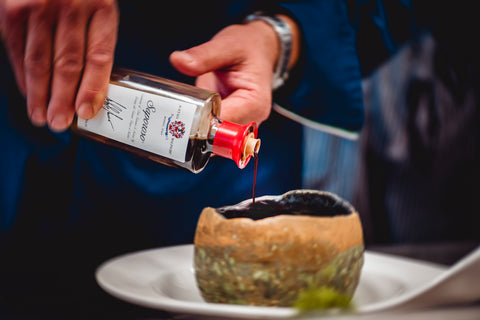
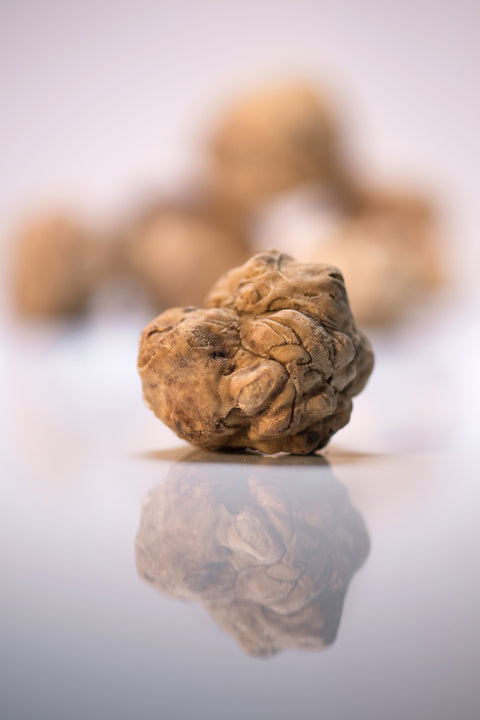
Comments (0)
There are no comments for this article. Be the first one to leave a message!